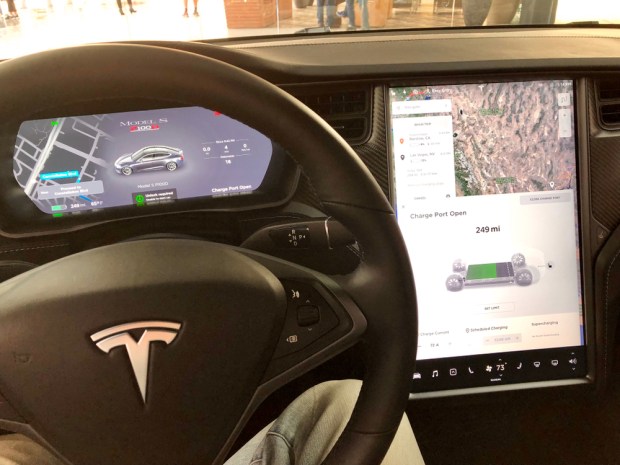What Happens When a Tech Company Builds Cars? Ask Tesla About Dojo

Tesla is famously not just a car company — it’s a software company.
And a key, promised part of that software vision is the realization of autonomous, fully self-driving (FSD) vehicles.
This, as the electric vehicle (EV) manufacturer let investors on its second quarter 2023 earnings call know that the far-away dream of a driverless future is getting closer.
That’s because the Elon Musk-led company plans to invest more than $1 billion by the end of 2024 into building an in-house supercomputer named “Dojo.”
More so than competitors, Tesla has focused on building out and owning the entire EV ecosystem, from selling to servicing to charging vehicles.
The strategy is working, and both General Motors and Ford have now agreed to adopt Tesla’s North American Charging Standard(NACS) for their electric vehicles. Already, Tesla Superchargers account for about 60% of the total fast chargers in the U.S. and Canada, according to Department of Energy data.
By sparing no expense to become a supercomputer leader, Tesla is making the same bet on providing the computing power behind self-driving capabilities.
Read also: Peeking Under the Hood of AI’s High-Octane Technical Needs
Thinking like a Technologist
One thing is for sure, Musk is certainly thinking more like a technologist than a car maker or OEM (original equipment manufacturer) with his supercomputer play.
Dojo is being designed from the ground up to parse massive amounts of data and train Tesla’s machine learning (ML) and artificial intelligence (AI) models to improve the EV company’s advanced driver-assistance system, with the eventual goal of supporting a fully autonomous driving experience.
Computer vision is the bread and butter of enabling Tesla’s autopilot dreams. Musk told investors that Tesla has a staggering amount of video at its disposal thanks to over 300 million miles of customer recorded driving data from the up to eight cameras on Tesla models. each running at 36 frames per second and capturing highly diverse scenarios.
The Dojo training computer is being designed to handle this massive amount of data pulled from Tesla’s fleet and turn it into autonomous-driving software.
This has resulted in a bespoke computing architecture meant to explicitly process millions of terabytes of video data considerably different from conventional supercomputer designs.
“Pace of innovation is the competitive advantage, not what has been created so far,” Musk previously said on a Twitter Spaces discussion July 14, announcing a separate AI initiative. “That’s the defense against competition.”
And as PYMNTS CEO Karen Webster’s Triple Clock Theory (TCT) explains, an incumbent business operates at a slower speed than a new entrants when introducing a product or service into the same competitive market.
It is hard to imagine Mercedes spending hundreds of millions developing one of the world’s most powerful computers — but Tesla’s Dojo will likely upend the automotive industry in unforeseen ways, with Mercedes even one day licensing the driverless software.
See Also: Musk’s Giant-Killing AI Project Is Starting Small With Huge Goals
An Innovation Years in the Works
Tesla already operates what has been described as the “number five” supercomputer in the world to develop its driverless autopilot system.
Dojo represents a quantum leap forward from the powers of even that hefty piece of parallel computing cluster hardware.
And Dojo has been in the works since at least Spring 2019 when a cryptic reference to a “super-powerful training computer” for video data processing was made on an analyst call.
Fast forward a year later, and Musk tweeted on August 15, 2020, that, “Tesla is developing a NN [neural network] training computer called Dojo to process truly vast amounts of video data. It’s a beast! Please consider joining our AI or computer/chip teams if this sounds interesting.”
“Dojo uses our own chips & a computer architecture optimized for neural net training, not a GPU cluster. Could be wrong, but I think it will be best in world,” Musk tweeted a month later, on Sep. 20, 2020.
In the years since, Musk ended up buying Twitter as well as bringing Dojo to life.
The only thing left to do is scale the technology.
“The defining goal of [Dojo] is scalability. We have de-emphasized several mechanisms that you find in typical CPUs, like coherency, virtual memory, and global lookup directories just because these mechanisms do not scale very well… Instead, we have relied on a very fast and very distributed SRAM [static random-access memory] storage throughout the mesh. And this is backed by an order of magnitude higher speed of interconnect than what you find in a typical distributed system,” said a Tesla hardware engineer in 2022.

